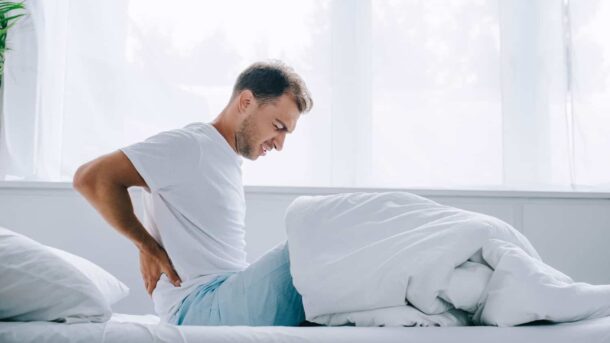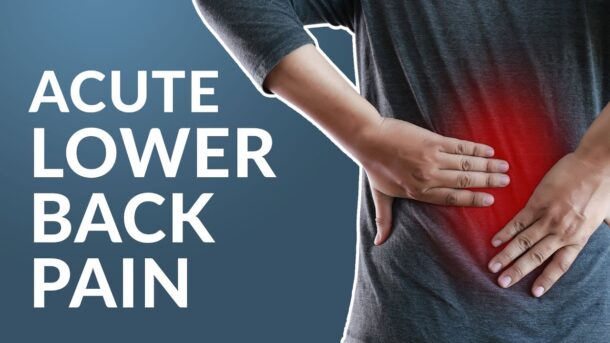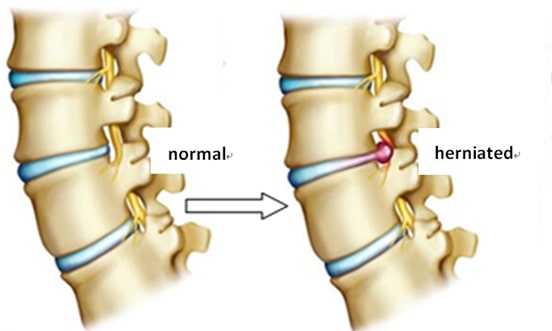Aging Safely: Avoid These 4 Risky Daily Moves (Backed by Doctors)For seniors, everyday actions like dressing or turning your head can pose hidden dangers. Falls, fractures, and cardiovascular events are leading causes of disability in older adults. Here’s how to stay safe by correcting high-risk habits. ❌ 1. Standing on One Leg to Put On Pants Why It’s Dangerous: Safer Alternative: Key Stats: ❌ 2. Bending Over to Lift Heavy Objects Why It’s Dangerous: Proper Technique: Pro Tip: Strengthen core muscles with seated leg lifts or water aerobics. ❌ 3. Sudden Head Turns (Whiplash Risk) Why It’s Dangerous: Safer Response: ❌ 4. Eating Too Quickly...
Continue reading...Zoe
Best Mattress for Lumbar Disc Herniation: Expert Guide
❌ Why Hard Mattresses Aggravate Herniated DiscsZero Lumbar Support: Overly firm surfaces fail to cradle the spine’s natural “S-curve,” leaving the lower back unsupported. Result: Muscles tense overnight, worsening disc pressure and morning stiffness. Pressure Points at Hips/Shoulders: Side sleepers risk hip and shoulder pain as bony prominents dig into unyielding surfaces. Weight Distribution Issues: Lightweight individuals hover over hard beds, forcing muscles to strain for stability. ❌ Soft Mattresses: A Sinking Disaster for DiscsSpinal Misalignment: Overly plush beds cause hips/shoulders to sink, curving the spine into a U-shape. Muscle Fatigue: Core muscles overwork to stabilize the spine, leading to...
Continue reading...Chronic Stress Symptoms: 4 Body Systems at Risk & 5 Science-Backed Coping Strategies
How Stress Wrecks Your Body (And How to Fight Back)Over 75% of adults report physical symptoms caused by stress, yet most underestimate its long-term health risks. From spiking blood pressure to triggering autoimmune flares, unmanaged stress acts like a “slow poison.” Here’s how to spot the warning signs and reclaim control. 4 Body Systems Destroyed by Chronic Stress 1. Cardiovascular System: Silent Killer of Overdrive 2. Immune System: From Defender to Saboteur 3. Musculoskeletal System: Pain Locked in Tension 4. Digestive System: Gut-Brain Axis Collapse 5 Proven Stress Management Techniques (Based on Severity) Level 1: Mild Stress (Manageable but Annoying) Level 2: Moderate Stress...
Continue reading...6 Hidden Signs You’re Dangerously Overtired
Is Your Exhaustion Normal or a Health Crisis?Chronic fatigue isn’t just “feeling tired.” Left unchecked, prolonged overexertion can trigger heart attacks, strokes, or hormonal collapse. Here are 6 urgent signs your body is screaming for rest—and how to respond before it’s too late. 1. Brain Fog & Extreme Sleepiness 2. Unexplained Muscle/Joint Pain 3. Gut Issues: Loss of Appetite or Constipation 4. Skin Breakouts (Acne, Rashes) 5. Chest Tightness or Palpitations 6. Irregular Periods or Missed Cycles When to See a Doctor ImmediatelyIf rest doesn’t resolve symptoms within 2 weeks, consult a physician to rule out:
Continue reading...Worst Sleeping Positions for Back Pain: 2 Healthiest Alternatives
“Wrong Sleep Position = Morning Back Pain” – Here’s WhyOver 80% of adults experience back pain linked to poor sleep posture. While temporary discomfort is common, chronic misalignment during sleep accelerates disc degeneration, sciatica, and muscle imbalances. Let’s debunk myths and reveal the orthopedic-approved sleep positions to protect your spine. ❌ Avoid These 2 Worst Sleeping Positions for Your Back 1. Stomach Sleeping: The Spine’s Nightmare 2. Fetal Position: A Temporary Comfort Trap ✅ 2 Best Sleeping Positions for Spinal Health 1. Back Sleeping (Supine): The Neutral Spine Champion 2. Side Sleeping: Customizable for Specific Needs 🛌 Special Cases: Optimizing Sleep for Medical Conditions Condition Ideal Position Pro Tips Sciatica Fetal-modified side...
Continue reading...Acute Lower Back Pain Relief: 5 Immediate Steps to Stop the Pain
What is Acute Lower Back Pain? Symptoms You Can’t IgnoreAcute lower back pain—defined as pain lasting less than 3 months—often strikes suddenly due to muscle strains, poor posture, or minor injuries. Symptoms include: Ignoring acute pain risks progression to chronic back pain. Follow these 5 science-backed steps for quick relief: 1. Rest Strategically (But Don’t Overdo It!) 2. Ice vs. Heat: Timing is Critical 3. Over-the-Counter Pain Relief 4. Fix Your Sleeping Position 5. When to See a Doctor Immediately While most acute back pain resolves in 1–2 weeks, urgent care is needed if you experience: A doctor may prescribe physical therapy, muscle relaxants, or imaging (X-ray/MRI) to rule out...
Continue reading...New Mom Back Pain Relief: 4 Expert Tips to Ease Baby Care Aches
Why Do New Moms Experience Back Pain?Over 50% of mothers report chronic lower back pain after pregnancy, often worsened by repetitive motions like breastfeeding, diaper changes, and carrying babies. During pregnancy, your core muscles stretch to accommodate your growing baby, weakening your lumbar support. Post-delivery, poor posture and muscle strain from childcare tasks further strain your back. The good news: With targeted postpartum back pain relief strategies, you can rebuild strength and prevent long-term damage. Here’s how: 1. Correct Your Posture: Breastfeeding & Lifting Hacks Incorrect breastfeeding positions are a top cause of mom back pain. Instead of hunching over, use a nursing pillow to...
Continue reading...4 Critical Signs You Need Surgery for a Herniated Disc
When is Surgery Mandatory for Lumbar Disc Herniation?While most cases of lumbar disc herniation improve with rest, medication, or physical therapy, ignoring severe nerve compression symptoms can lead to irreversible harm. Here are four non-negotiable signs that herniated disc surgery is necessary to protect your mobility and quality of life. Why Timely Herniated Disc Surgery Matters?Modern techniques like endoscopic microdiscectomy or laser spine surgery minimize scarring, reduce recovery time (often 2–4 weeks), and boast >90% success rates for pain relief. Delaying treatment increases risks of chronic pain, disability, or failed back surgery syndrome.
Continue reading...6 Tips to Help Ease Your Back Pain
Back pain is one of the most common reasons people visit the doctor. Most people will experience lower back pain at some point in their life. The reasons vary, from acute sprains from sports injuries to longer-term diseases caused by a variety of factors. Here are six tips to ease some pain and keep your back healthy: 1.Add exercise to your routine Capitalise on working from home and take breaks to exercise. You don’t have to become a gym junkie – 10-15 minutes of walking, stretches, yoga, or core exercises add up to a healthier, more productive you. 2.Avoid sitting...
Continue reading...







